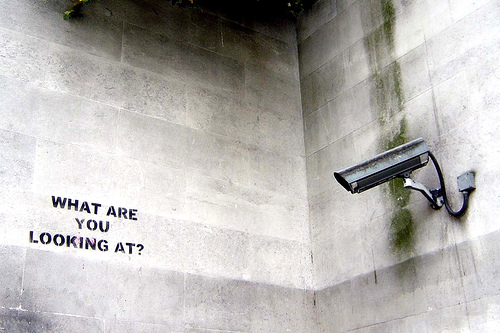Invisible eye

In principle, modern technologies of access, automation, as well as the level of development of wireless devices make it possible for everyone, in any way geographically limited, to assemble a magical Hogwarts map, similar to the one that was available to Harry Potter.
And no magic is needed. What is there - quite a mundane technology. If you use an electronic pass to access your office, then in the automatic mode, the checkpoint already receives enough information about where you are (or where you last passed through the turnstile), how much time you spent inside the facility (at your workplace). ) etc. Our company has long been developing a visual control system in the enterprise, but, more recently, we were lucky to introduce all our developments. At the same time tell the audience about what requirements are imposed on such systems by the customer.
')
Graduated magicians begin to come in handy when the usual system needs to be expanded. Most often, the customer (whose name, this time, we cannot name) adds such a non-trivial zest that the system transforms into something else. In our case, such a highlight was the biometric control, and, in its most technologically complex form - the comparison of the face image in real time.

Visual control is so complicated for the reason that its potential is almost unlimited, but there are a huge number of subtleties and barriers, without taking into account which, the effective result of such a system can be reduced to nothing.
A trivial example - in street video control, light plays an important role, since with the onset of twilight, visibility decreases critically and you have to use additional tools.
The face of a person is the simplest "beacon" on the object map, seeing him, you understand, can you skip a person inside or not. Along with this, there are side requirements that the person himself is no longer able to satisfy. Therefore, visual control is almost always a laborious and resource-intensive task.
In our particular case, there were two “subtle” points:
A. A non-standard approach for Russia - the abandonment of the “administrative resource” and coercion to produce documents for identification; on the contrary - the complete stealth of the complex.
B. Work in a stream with a response probability higher than 95% with a minimum recognition time. This means that regardless of the conditions under which the control takes place and how the object behaves, the system must identify and match the information with the base of passes. Sleepless, unshaven, hiding eyes, etc. - everyone is familiar.
With normal line-of-sight and high-quality “matrix”, the system identifies a person instantly.

- Request information about the locations of employees / visitors in a certain period of time
- Waiting for an employee / visitor to appear at a specific location
- Request information about the location of employees / visitors present at the facility
- Setting the description of the new object
- Request information about events in the system
- Collection of statistics in the framework of the “mobile complex”
- Work offline
Something like this is a typical list of system requirements, similar to ours - and we took them as basic ones. The advantages of such systems are obvious: once having just photographed a person, you can write him a “pass”.
There is a “white” list, but there is also a “black” one. At the same time, a person who could potentially be on your blacklist will most likely not pose for you at will - in such cases, most often, difficulties arise when there is no good quality “matrix” for recognizing a person’s face.
Nevertheless, we managed to achieve high performance of the restrictive function of the system. For example, you can give a person a pass only on a certain route: “don't go there - go here”. A similar system is used at the University of Tokyo, where any visitor without “authorization” at a checkpoint can get into certain objects, while the rest remain accessible only to those with a full pass.

Of course, at the logic level, the video recognition system and the monitoring system are two different objects. They are integrated using the API provided by the video monitoring system. Since the maximum number of people who can be “read” at the same time in all frames can be enormous, and the quality of their photographs is different, we have assembled a powerful hardware kit on which the entire system is based. A separate point - to achieve even greater performance, we actively used caching methods.
There is no conspiracy theory - there is only a small "intelligence" of the system, which is able to compare photos from the base with the image from the camera with an indication of "compliance", expressed as a percentage.
Otherwise, the potential of using such a system lies, first of all, in the statistics that it provides. Here and personnel technology, and purely logistic. In our country, this is still a novelty to many, despite the fact that most developed communities have already adopted electronic transport, public and social services.
Source: https://habr.com/ru/post/187456/
All Articles